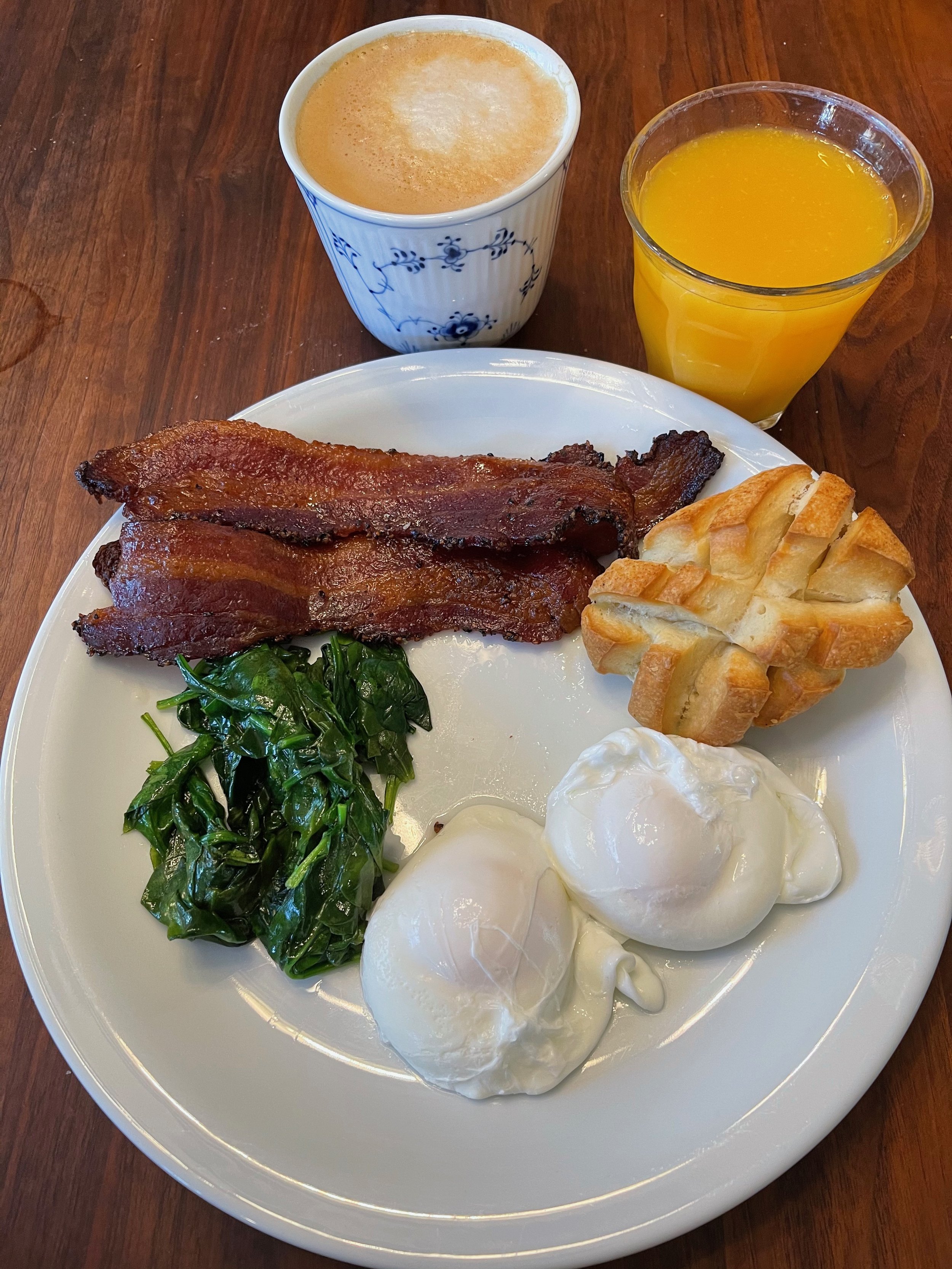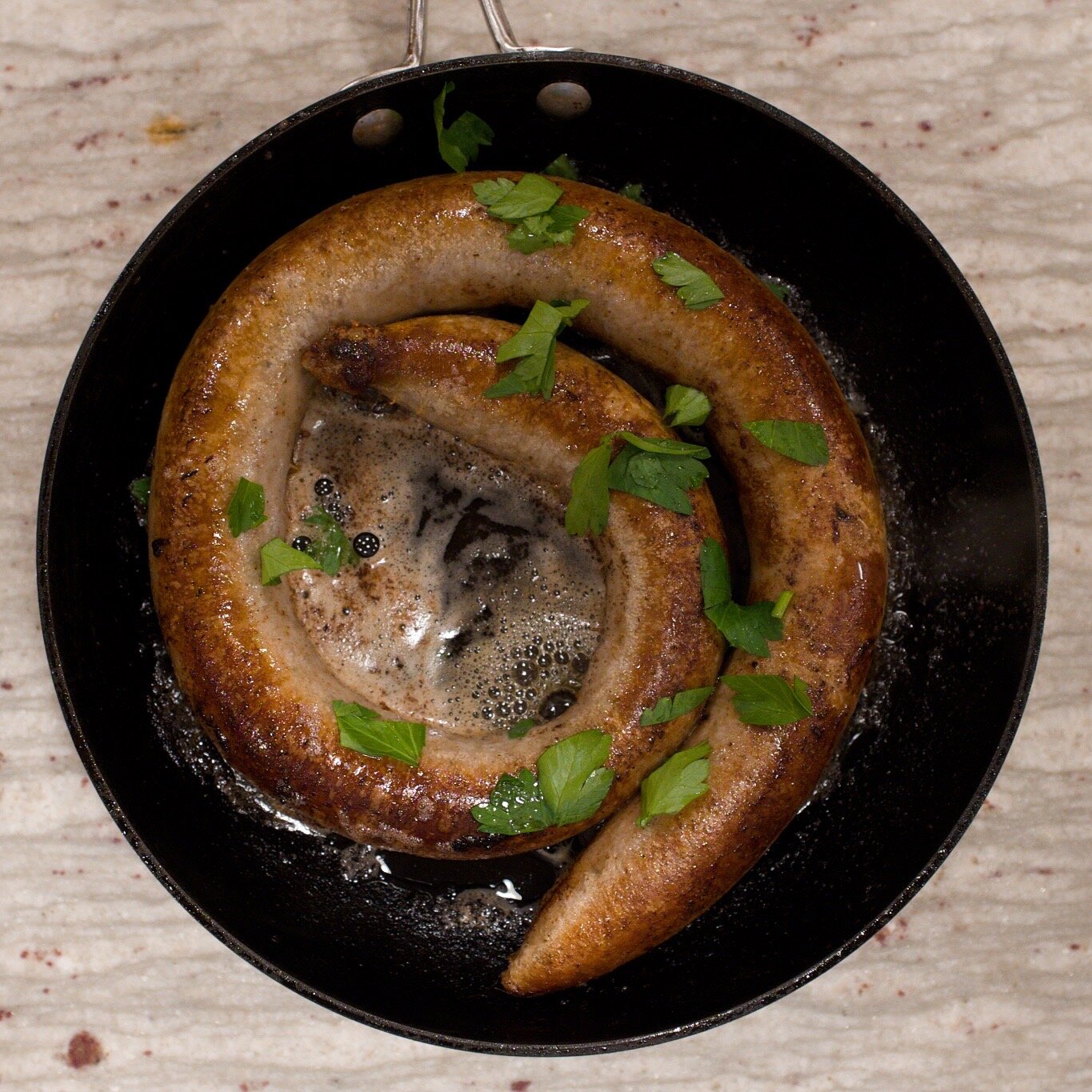Poached Eggs.
I really love poached eggs, but it’s kinda a new love. Before we moved to California, it wasn't really a thing for me. Back then I preferred soft boiled eggs. But a poached egg is pretty much a naked soft boiled egg 😆, so maybe I didn’t change much 😳
I thought I had found a foolproof method, but it was hard to make more eggs at a time, when making a whirlpool in the pot. So with this newer (to me) method, I’m able to make 4 eggs at the same time. And I perfected this method to fit my family.
I use my thick bottomed sauté pan, it is wide and shallow, and works perfect.
Eggs in general: When you want poached eggs, you need to use fresh eggs. When you crack the egg you can tell that you have a fresh egg, when the yolk is firm and plump, and the white consist of two parts: a gelatinous mass around the yolk and a runnier liquid. As the egg ages, the white becomes more runny. So the runnier the white, - the older the egg.
If you don't want to crack the eggs to figure out the freshness, here's a quick guide:
Place your eggs in a cup or bowl of fresh water
If the egg sinks and lays flat on the bottom, it's very fresh.
If the egg sits on the bottom at an angle,it's a bit older.
If the egg stands on end but still sits on the bottom, use for baking.
If the egg floats, it is old and you don't want to use it.
Serves 2-4
Ingredients:
4 eggs
2 tablespoons vinegar
Equipment needed:
Shallow saucepan with cover
Slotted spoon
Directions:
Crack the eggs into a cup each.
Bring the water to a boil, add the vinegar.
Turn off the heat.
Gently place the eggs in the pan with some space between them. Put on the lid.
Set the timer for 4 minutes when you have placed the first egg in the water.
Remove the eggs from the water with a slotted spoon in the same order as you put them in.
Serve immediately. Alternatively, place the egg in an ice bath and refrigerate up to 8 hours. Reheat in warm water just before serving.
Enjoy!









